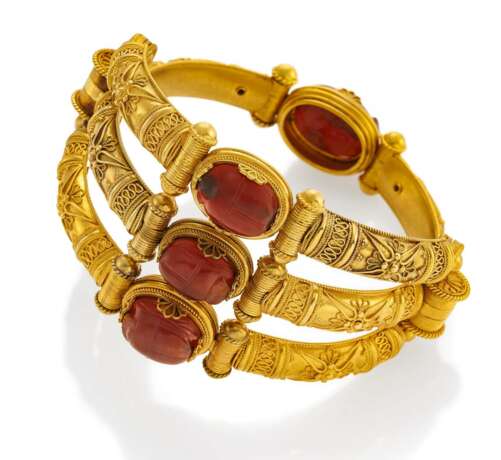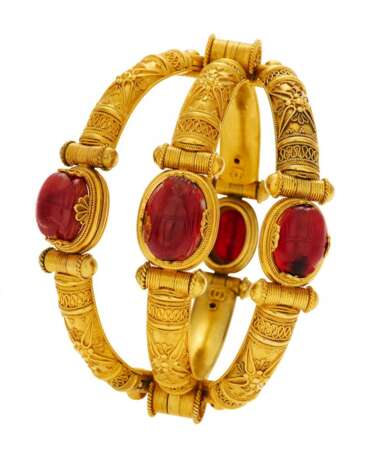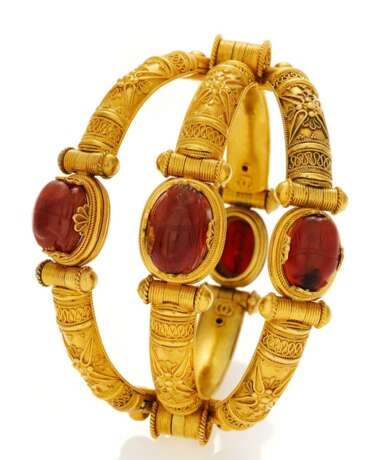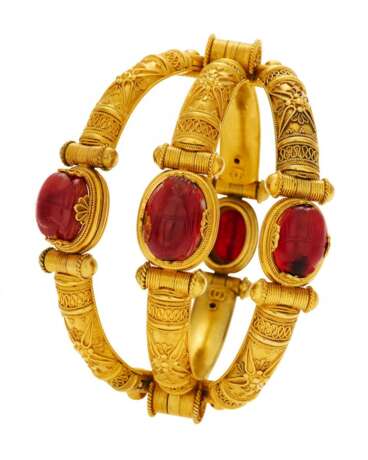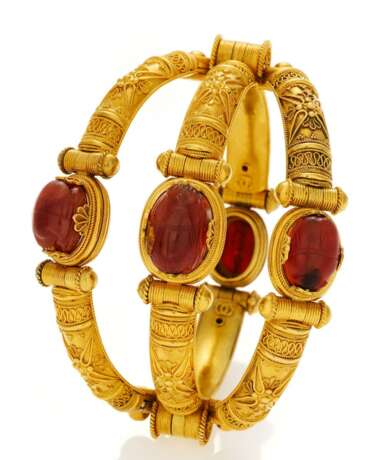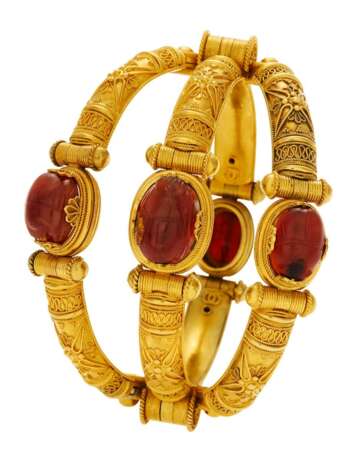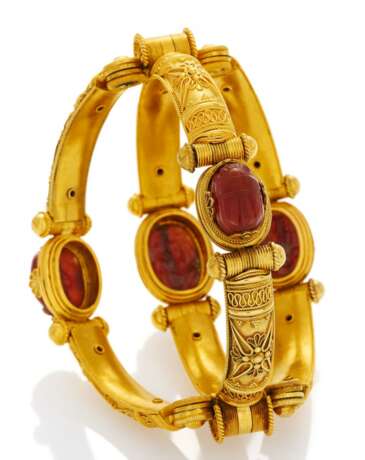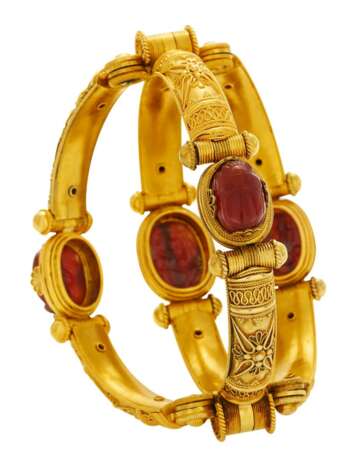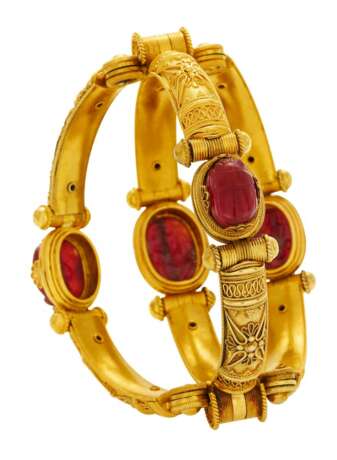ID 331898
Lot 602 | CASTELLANI
Estimate value
€ 6 000 – 7 000
1814 - 1914
Armreif.
Herkunft: Italien.
Datierung: 1860er.
Material: 750/- Gelbgold, getestet.
Gesamtgewicht: ca. 115,5 g.
Maße: Innendurchmesser 6,1 cm.
Edelsteine: 4 geschnitzte, antike Karneol-Skarabäen 1,6 x 1,0 cm..
Beschreibung: Als Pio Fortunato Castellani (1794 - 1865) 1814 seine Werkstatt in Rom eröffnete, war die Form und Beschaffenheit von authentischem Schmuck der Antike zum großen Teil noch unbekannt. Die Entdeckung der Tomba Regolini Galassi im Jahre 1836 und weitere, darauf folgende Ausgrabungen änderten dies und läuteten den Triumphzug der antiken Goldschmiedekunst ein.
Besonders begehrt war die Granulationskunst der Etrusker, eine Methode, bei der eine Goldoberfläche mit so feinen Goldkügelchen besetzt wird, dass scheinbar ein einziger Windhauch ausreicht, um die Kügelchen in alle Himmelsrichtungen zu verteilen. Da das Wissen um die Herstellung zusammen mit den Etruskern verschwand, war das begrenzte Angebot an derart verzierten Schmuckstücken besonders begehrt.
Zusammen mit seinen Söhnen Alessandro (1823 - 1883) und Augusto (1829 - 1914) konzentrierte sich Pio Fortunato Castellani auf die Wiederentdeckung genau dieser Technik und zusammen erzielten sie bemerkenswerte Ergebnisse. Ob sie die identische Technik wiederentdeckten oder nach einer ähnlichen Technik arbeiteten, verrieten sie aus offensichtlichen Gründen nicht. Fest steht jedoch, dass wahre Meisterwerke der Goldschmiedekunst ihre Werkstatt verließen und dass noch viele Goldschmiedemeister*Innen versuchen würden, den Etruskern ihre Geheimnisse zu entlocken.
Historisierender Armreif mit außergewöhnlicher Golddrahtverzierung. Drei hohl gearbeitete, außen gerundete Reifen. Reifen mit aufgeschmolzenen, feinen, glatten und kordierten Golddrähten verziert. Die für Castellani typischen Skarabäen hocken mittig auf jeder der Spangen, gefasst von Krappen in Palmetten-Form. Zwei Glieder beweglich.
1 Skarabäus wohl mit Altrestaurierung, 1 Skarabäus mit Abplatzung. Goldschmiedearbeit sehr gut erhalten.
Punze: 2 ineinander verschlungene C.
2 Ersatz-Glieder anbei.
Provenienz:
Privatsammlung Süddeutschland, erworben 1963 im niederländischen Kunsthandel "het Huis van St. Eloy".
Literatur:
David Bennett und Daniela Mascetti: Understanding Jewelry. Suffolk 1994.
| Address of auction |
VAN HAM Kunstauktionen GmbH Hitzelerstr. 2 50968 Köln Germany | ||||||||||||||
|---|---|---|---|---|---|---|---|---|---|---|---|---|---|---|---|
| Preview |
| ||||||||||||||
| Phone | +49 221 92586215 | ||||||||||||||
| Fax | +49 221 92 58 62 4 | ||||||||||||||
| Buyer Premium | 32% | ||||||||||||||
| Conditions of purchase | Conditions of purchase | ||||||||||||||
| Business hours | Business hours
|
